Horse owners often ask farriers what’s the best environment for horses’ feet.
Horses are kept in a wide variety of environments — indoors, outdoors, big pastures, small pens, every kind of footing imaginable — and climates, from the arid deserts of the Southwest to the rain forests of western Washington, humid tropical climates of Florida, or muddy springtime in Maine. The environment definitely impacts the health and structure of horses’ feet.
How Does Environment Affect Feet?
“The environment a horse lives and works in has a significant effect on the overall health of feet,” says Travis Burns, lecturer and chief of farrier services at the Virginia-Maryland College of Veterinary Medicine at Virginia Tech in Blacksburg, Va.
A dry environment results in hard, dry feet, whereas a wet environment results in softer feet.
“If footing is soft in a wet environment, hoof wall growth exceeds wear, resulting in significant flaring,” Burns says. “Inevitably, a moist/wet environment opens the hoof to micro-cracks and fissures that allow for the migration of dirt, debris and bacteria into the foot. The incidence of white line disease and abscesses are increased.”
Julie Bullock, a veterinarian/podiatrist in Mount Sidney, Va., spends part of the winter in Florida, and serves as a vet at endurance rides all over the world.
“I see a big difference in integrity and hoof quality in different environments,” she says. “Horses in arid New Mexico have feet that are hard as a rock, while horses on the East Coast contend with more humidity and the hoof tubules tend to be softer.”
John Welsh, a farrier in Weatherford, Texas, says his area gets about 22 inches of rainfall annually. He’s also shod horses in Arizona, where it’s much drier.
“The good thing is that horses are adaptable and most of them can do reasonably well in nearly any climate, with good hoof care,” he says. “Many people use oil or greasy products on horses’ feet to try to keep them softer in a dry climate, but I don’t think it helps. The foot is designed to be dry when weather is hot and dry. They have to be dry and hard so they won’t wear away too quickly.”
FARRIER TAKEAWAYS
- When a horse lives in a wet environment and a farrier notices small cracks and fissures developing and areas packed with debris, show the client and explain the potential problems that could be around the corner.
- Showing clients articles in horse publications often prompts them to think about ways to improve the hoof without appearing to be critical.
- Document your hoof-care advice to owners and trainers in a notebook that you keep in your truck. In addition, include the advice on invoices and receipts that you send to the client. It can help avoid situations in which your advice isn’t being passed on to the client.
What’s The Most Ideal Environment?
A clean dry environment is often considered best for a hoof. Yet, it too has its drawbacks.
Feral horses in an arid environment tend to have hard, strong feet and can do fine barefoot, unless they have to travel long distances.
Under natural conditions, most free-roaming horses don’t travel that much — just normal grazing activity, going to water, an occasional frolic with herd-mates or a quick run from predators.
“When we look at environmental conditions and hoof capsules, we need to consider where the horse is housed, what the footing is like in its outdoor pen, what the horse does for a living and what we are asking the hoof capsule to withstand,” Bullock says. “It can’t withstand high mileage without some kind of protection.”
Bullock compares everything to a natural environment, such as arid terrain where feral horses roam.
“They go to water once a day and their feet get wet for a few minutes, but are dry the rest of the time,” she says. “They are not standing in water. Horses evolved grazing over large prairies — relatively dry footing rather than soft, wet pastures.”
Bullock recalls a conversation she had with International Equine Veterinarian Hall Of Fame member Ric Redden about his observations of the environment’s effect on the hoof.
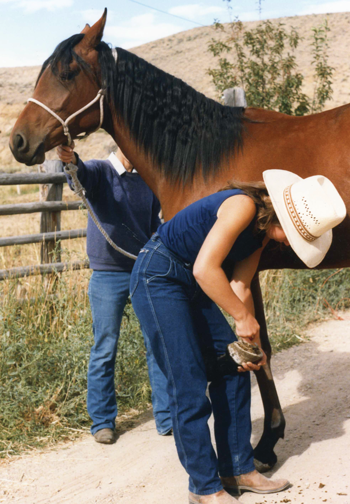
Horses in arid climates have hard, dry feet and fewer cases of white line disease.
“He studied mustangs in the West and adopted two of them and brought them home,” she says. “He remarked how their feet changed after they came from that arid environment to Kentucky. The hoof quality in his opinion is better on horses in the arid West than horses on the East Coast.
“I’ve vetted a lot of endurance rides in Colorado, New Mexico, California, etc., and have never seen white line disease in any of those horses.”
The ideal situation is enough rock in the pasture or pen to have a little abrasion to keep feet worn down and smoothed when horses are barefoot. This is healthier than a soft, damp footing that doesn’t wear the feet. That environment tends to grow feet that are too long, splay out and then crack and split.
“Depending on how much area horses have to roam, some of them maintain a very healthy foot that doesn’t need trimming very often,” Bullock says. “If they don’t have enough acreage to move and self-exercise, or enough abrasive surface, they need more frequent hoof care.”
Getting Clients To Buy In
Often the farrier sees a problem and tries to educate the owner about a poor environment, and give advice on how to make it better for the horse.
It can be hard to tactfully advise the owner about the dangers of a poor environment if the owner hasn’t asked for help.
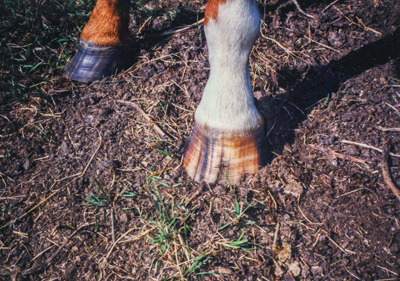
Horses’ hooves that are alternately wet and dry cause cracks, which can allow dirt, debris and bacteria to enter and cause problems.
“If the horse is in a wet environment, the farrier will often see small cracks and fissures developing and areas packed with debris and microbes,” Burns says. “It is the farrier’s responsibility to show the feet to the owner and say, ‘Look, these are areas that could result in problems. Stopping it now will eliminate the risk of having to deal with abscesses or white line disease.’
“Most owners have heard those terms, so if you can show how their horse is on the brink of these issues, this may get their attention.”
If they can look at the foot with you and see for themselves, then you can explain what the problems are — what an abscess is, what white line disease is, what can happen and how it would have to be treated.
“Then their next question will be, ‘How can I prevent it?’” Burns says. “This is your opportunity to explain that this is an environmental problem and opens the door for suggesting how to change those conditions for that horse.”
This is a way to get owners asking questions.
“Eliminating areas of mud, manure and standing water can help,” Burns says. “The farrier can make suggestions, or mention that the owner could get help from local Extension offices on how to establish drainage to make the pens drier—what kinds of substrates and materials to use around the barn, how to rotate pastures to keep them in appropriate conditions, etc.”
It also helps to keep horses indoors during bad weather, mud, and so on.
“I tell people they can put the horse’s feet in plastic bags to keep the feet dry when bathing the horse,” he says. “They could also apply a sealant or waterproof coating and let it dry, and then bathe the horse. If they simply brush off the feet, apply the sealant and allow it to dry, and then bathe the horse, they will end up with a better hoof by the end of the show season.”
Even if the horse owner doesn’t have a barn, a built-up, well-drained area can be created in the outdoor pen, with a roof over it, where the horse can get out of the rain and mud.
“In this situation you want the owner to pick out the feet daily and try to keep them cleaner and drier,” Bullock says. “The hoof capsule is not intended to be continually immersed in water and mud.”
Tact And People Skills
Communication with the client is often the hardest job. It takes tact and people skills. Over time, some clients will come around to accept advice, but with others, a person walks a fine line trying to help them. It takes a good feel for the client’s openness to suggestions, to know how thorough you can be in the advice you can give.
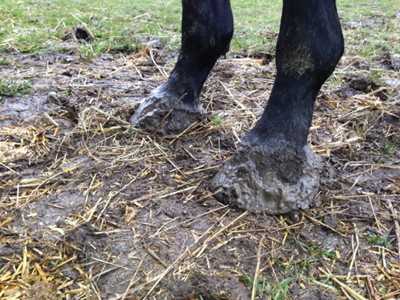
Too much moisture and standing in mud causes problems with horses’ feet. A horse that lives in a muddy environment needs its feet cleaned out and a place to have its feet dry out.
“Farriers generally know what they should tell the client, but knowing how to do it is the difficult part,” Burns says. “The more information the client can get, such as in horse publications, the better.”
This can help owners and trainers realize that they should consult their farrier or be open to things the farrier might be able to tell them about improving conditions for the horse.
“In some situations when the client may not be quite ready for advice, if the farrier can bring that publication or article to the client and say, ‘Hey, I just happened to read this over the weekend and thought it was really interesting. Have you read this?’” Burns suggests. “This can get the owner thinking about these things without having to be the bad guy or the person critiquing the horse and its care.”
Scott Chandler, a farrier in the Ocala, Fla., area, says that educating owners is nearly impossible sometimes.
“The 3-day-event people and jumpers like to turn their horses out at night because its cooler,” he says, “but we have so much humidity here that the grass is wet. In a wet environment their feet get terrible.”
Chandler tells some owners they have only two options.
“They can either manage their horses feet so they can hold together, or the shoes will keep getting torn off and the feet will get beat up enough that they reach a point where we will be gluing shoes on,” he says. “Then the expense will get to where they will quit trying to compete these horses.”
Chandler’s first priority is the horse, so he believes in cutting to the chase.
“I can be a little abrupt because I tell people the truth,” he says. “I tell them that this is the way it’s going to be, and if they don’t want to do it that way, I can’t help them. I am not very tactful, but I am trying to help the horse.”
It may take time to help the owner understand the problems.
“Sometimes I just have to plant a seed,” Chandler says. “I tell them they might want to think about this, or that. The next time I’m there, I ask if they thought about what we talked about the last time — if this horse might need a hoof supplement or hoof sealant to protect the foot, or not be outside at night in the dew.”
Some of his clients appreciate the fact that he is very straightforward and abrupt, while others think he is too gruff.
“I am not going to dance around the subject for six shoeings,” Chandler says, “and then all of a sudden say I think we need to try something else.”
By then the horse’s feet are in trouble.
“All too often the farrier is just telling the clients what they want to hear, rather than telling them the truth, but that doesn’t help their horse,” he says. “Sometimes being abrupt is more than what people can swallow, but if they will listen, you can get in front of some of those issues before they become a larger financial issue and more dangerous for the horse.”
More on The Web
Read more about two studies that focus on moisture in the equine foot.
Chandler suggests keeping a notebook in your truck and documenting what takes place.
“I write down things like, ‘spoke to trainer about such-and-such issue’ and any details that I think are important,” he says. “I also put that on the receipt I send to the owner and that I brought it to the attention of their trainer that this issue needed to be addressed.”
Chandler’s method came about 6 years ago because a trainer wasn’t telling his client the complete truth.
“It put me in a bad situation, so I started writing everything like that in a notebook and on my receipts — that this horse has these issues that need to be addressed,” he says. “It’s not always what they want to hear, but I tell them, ‘Look, I hate to be the bearer of bad news, but things aren’t being taken care of in a manner in which you’d want your horses to be taken care of.’ I am not going to be the scapegoat in which the trainer lays it on me, saying the farrier never said anything about those issues. This way I have proof that I did discuss it.”

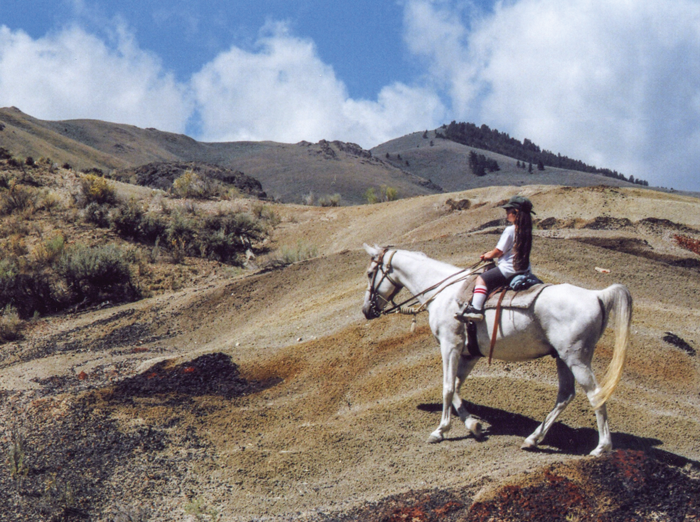
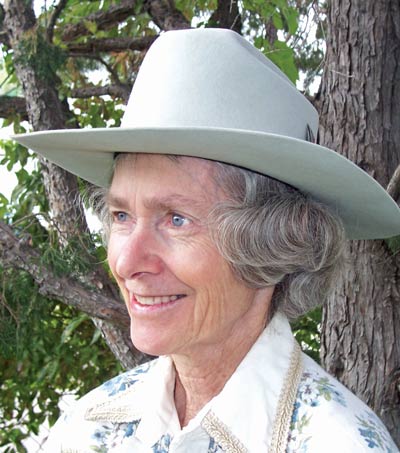






Post a comment
Report Abusive Comment